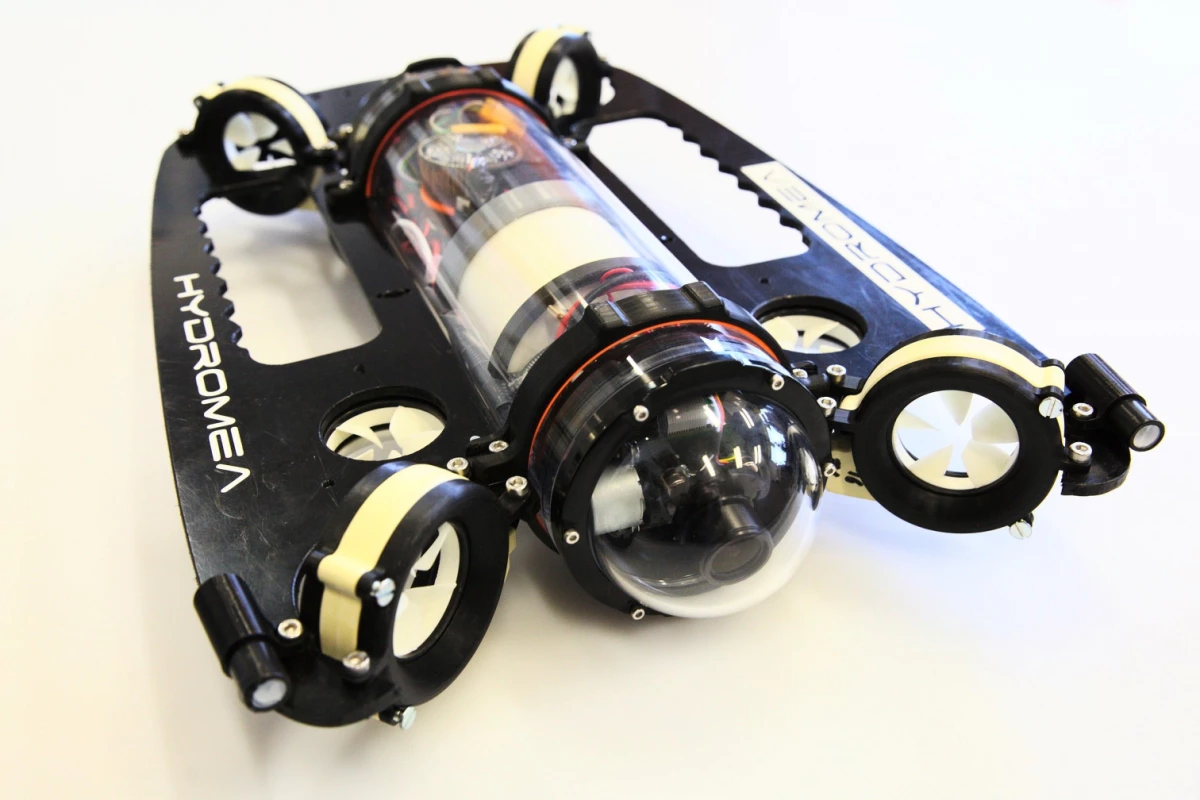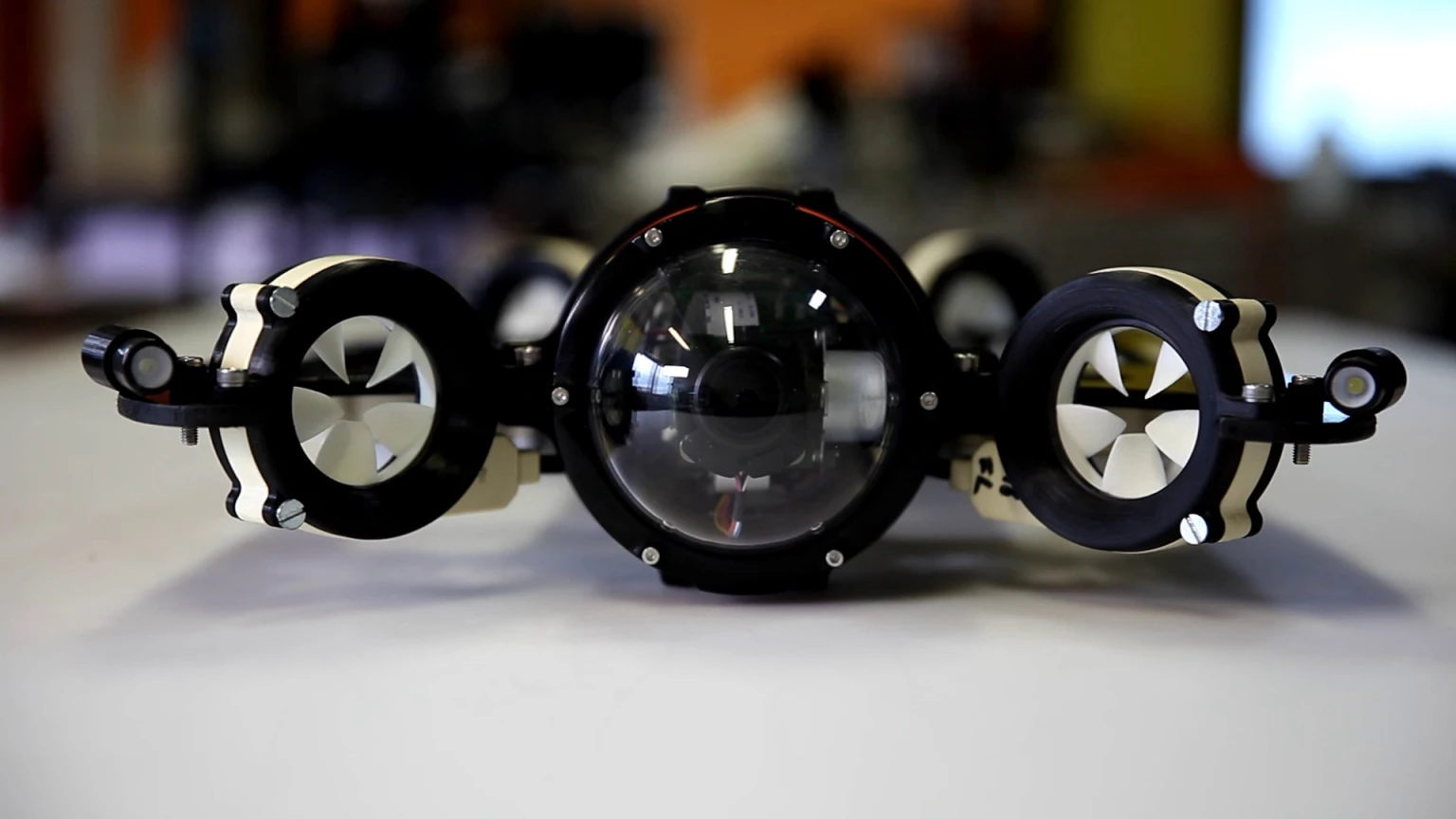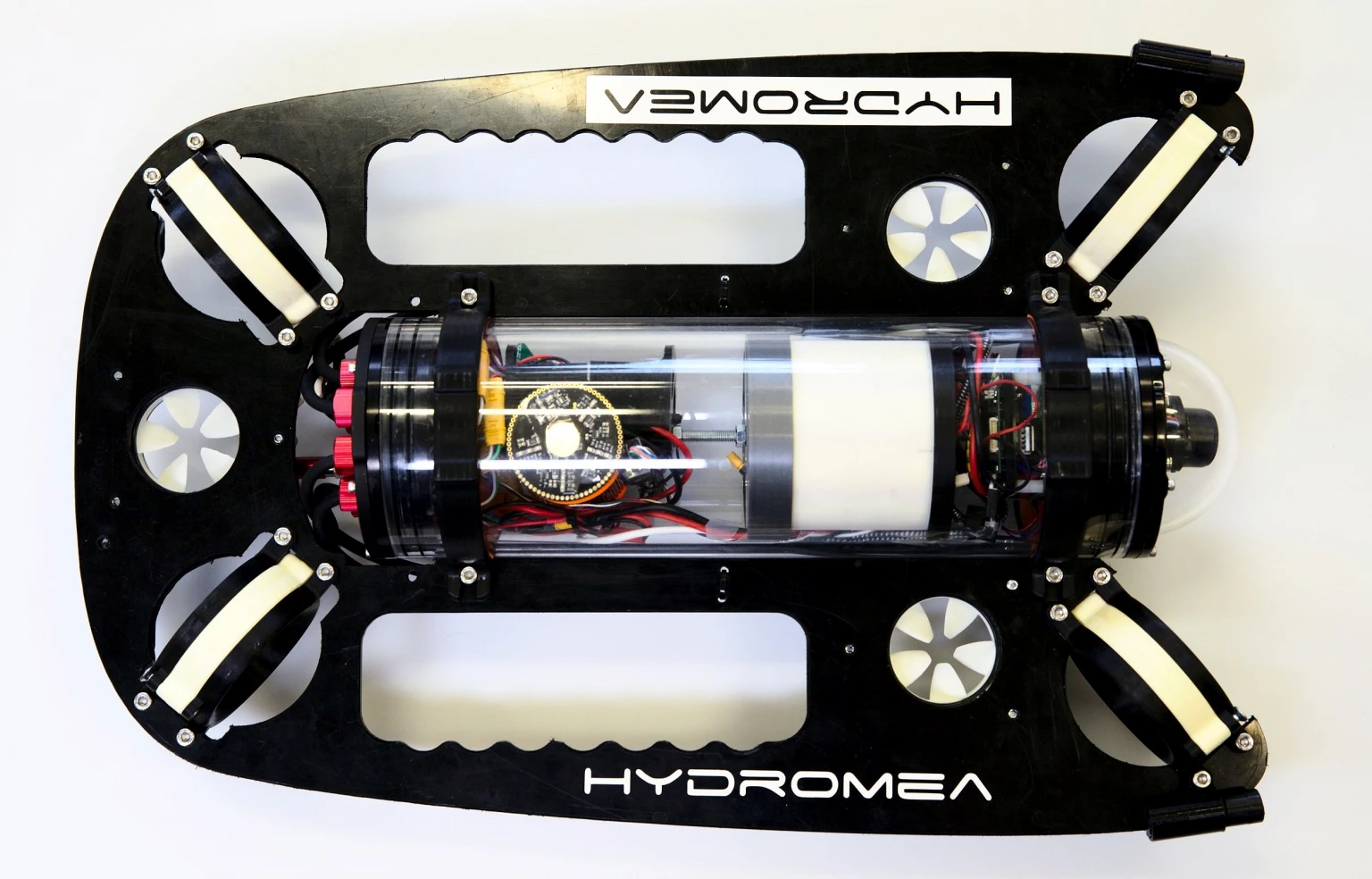Despite ongoing advances in the field of underwater remotely operated vehicles (ROVs), the devices have remained tethered to the surface via communications cables. Such is not the case with the ExRay, however, which uses light instead.
Because radio waves don't travel well through water, ROVs currently have to be linked to their surface-located operator via a long cable that sends commands down to the vehicle, and that relays real-time video back up. In many cases the cable also provides power to the ROV, although some models are powered by their own onboard batteries.
In any case, because the reeled cable can be quite heavy (with a possible newly developed exception), fairly large surface vessels are typically required to carry it. What's more, the cable can get snagged on underwater objects, potentially resulting in the loss of the ROV. That's where the ExRay comes in.
Billed as being "the world's first wireless underwater drone," it's currently being developed by Swiss startup Hydromea.

The functioning prototype utilizes the company's existing Luma underwater communications system, which transmits binary data through the water via rapid pulses of light. We've seen this concept explored previously, although not to the point that it's actually been incorporated into an ROV.
In more detail, Luma sends pulses of 470-nanometer blue LED light back and forth between two optical modems, one on the ROV and one at the surface. Because the data is transmitted at a rate of 10 megabits per second, even HD video from the ExRay's onboard camera can be relayed with virtually no lag.
There are some limitations, as Hydromea co-founder Alexander Bahr tells us that the ROV currently has a communications range of 50 m (164 ft) in clear water and complete darkness – that figure decreases as ambient light and turbidity levels increase.
That having been said, the company is aiming for a range of at least 100 m (328 ft), which should increase as the technology is developed further. Additionally, the vehicle is intended mainly for enclosed-space tasks such as the inspection of ships' ballast tanks, so long range isn't necessarily much of an issue at this point.

The ExRay itself – in its current incarnation – is 70 cm (27.5 in) long, weighs 7 kg (15 lb) and features a total of seven hubless thrusters (four vertical, three horizontal), giving it six-degrees-of-freedom maneuverability. Along with its zoom-capable HD camera, it also sports dual LED spotlights and a battery runtime of six to eight hours.
More detailed specs and pricing should be announced when it's commercially released, which Bahr says ought to happen late next year. In the meantime, you can watch the prototype doing its thing in the video below.
Source: Hydromea






